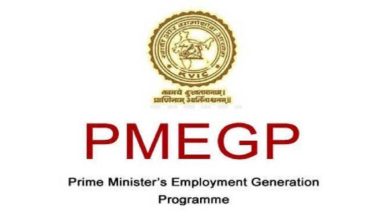Amidst the bustling clatter of a busy kitchen, chefs and home cooks alike are beginning to rethink the tools they use. With increasing awareness about the environment, many are opting for sustainable and eco-friendly kitchenware that has less of an impact on the planet. One standout item in this green revolution is the dosa pan, making a remarkable impression with both its functionality and environmental impact. But why are dosa pans gaining such popularity, and what makes them an exemplary choice in eco-friendly cookware?
The Growing Demand for Eco-Friendly Kitchenware
Consumers are becoming more conscious of their environmental footprint, and this is influencing their purchasing decisions, even in the kitchen. Eco-friendly kitchenware, which encompasses products made from sustainable materials and processes, has seen a surge in demand. Stainless steel, cast iron, and other recyclable materials are gaining precedence over non-renewable alternatives. This shift is driven by the desire to reduce waste and motivation to enhance holistic wellness, as many eco-friendly products are free from harmful chemicals and toxins.
Understanding the Dosa Pan
A Cultural Heritage with a Modern Twist
The dosa pan, traditionally known in India for preparing the iconic South Indian crepe, is experiencing a resurgence as a piece of cultural cookware with a modern eco-friendly twist. Made primarily from cast iron, these pans are praised for their ability to evenly conduct heat, which means thorough cooking with less energy usage. Their durability is unmatched, offering a longer lifespan compared to non-stick alternatives, thus contributing to reduced waste.
The Versatility and Popularity of Dosa Pans
Moreover, dosa pans have evolved beyond their initial purpose. They are now appreciated globally for their versatility, allowing individuals to prepare a variety of dishes, from tortillas to pancakes, without compromising on taste or texture. Their newfound popularity in Western kitchens highlights not only their effectiveness in promoting greener cooking but also their appreciation for cultural exchange in culinary arts.
Benefits of Using Eco-Friendly Dosa Pans
Sustainability and Eco-Consciousness
Choosing a dosa pan fits into a broader spectrum of making sustainable choices. Eco-friendly dosa pans are typically crafted using environmentally safe processes and are exemplary in showcasing how traditional tools can be adapted for modern environmental challenges.
Health Implications and Safety Features
Beyond environmental benefits, dosa pans offer significant health advantages. Unlike non-stick pans that often feature coatings with polytetrafluoroethylene (PTFE), which can release toxic fumes at high temperatures, cast iron dosa pans are free from synthetic coatings. Using natural materials negates the risk of chemicals leaching into food, ensuring a safer cooking and dining experience.
Exploring Trends in Eco-Friendly Kitchenware
The Rise of Cast Iron
The renaissance of cast iron cookware marks a notable trend in eco-friendly kitchenware. Known for its longevity and recyclability, cast iron is returning to kitchens around the world as a renewable choice. Its integration in creating efficient dosa pans is a testament to its adaptability and enduring benefits.
Reusability and Minimalist Designs
Another growing trend is the focus on minimalist designs that champion reusability. Kitchenware that serves multiple purposes or has a timeless aesthetic reduces the need for frequent replacement. Dosa pans, with their sleek design and multi-use capability, align perfectly with this trend, balancing practicality with style and sustainability.
How to Transition to Eco-Friendly Kitchenware
Evaluate Your Cooking Needs
Assess your current cooking habits and identify the type of cookware you use frequently. This evaluation can help determine which eco-friendly options, like dosa pans, will seamlessly fit into your kitchen routine and make the transition smoother.
Investing in Quality Over Quantity
Rather than amassing an arsenal of cookware, prioritize quality. Investing in high-quality dosa pans not only ensures durability but also aligns with eco-conscious living by reducing the need for frequent purchases, ultimately diminishing your environmental footprint.
Conclusion: A Future Toward Sustainable Cooking
The rise of eco-friendly kitchenware heralds a promising future for sustainable cooking practices. Dosa pans, leading this trend, are more than culinary tools—they embody heritage, sustainability, and innovation. Opting for eco-friendly choices transforms each meal into an opportunity to positively impact the environment, fostering a culture of mindful consumption that transcends the kitchen. As awareness grows, there is hope that more individuals and industries will embrace this eco-conscious movement, paving the way toward a healthier planet.





